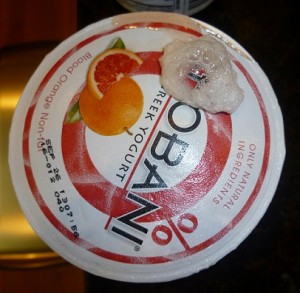Chobani Yogurt Offers Lesson in Crisis PR
Chobani’s PR team offers a lesson in crisis management do’s and don’ts.
As so many things do these days, it all started on Facebook. In the last few days of August, fans of Chobani’s Facebook page began reporting “puffy lids” and a “carbonated” taste from the top-selling Greek-style yogurt maker in the U.S. The company quickly realized it had a problem.
It took baby steps to remedy, first asking stores in Oregon and elsewhere to pull containers over an unspecified “quality problem.” One week later, as its Facebook page and the media erupted with stories of “poisoned” yogurt, Chobani issued a voluntary recall through the Food and Drug Administration.
The problem, as it turns out, was fairly benign. The culprit was a species of mold called Mucor circinelloides, which is commonly found in the dairy environment and is not considered a foodborne pathogen. Yet it still causes illness. Neither the FDA nor Chobani will release the number of people reporting to have been negatively impacted, only saying “its not in the hundreds or thousands.”
Chobani’s PR team response
As a PR case study, Chobani did many things right. They put their compassionate and endearing CEO, Hamdi Ulukaya, front and center, using his name and image to release updates and statements to customers. They were honest and educational, issuing beautiful infographics on the Mucor circinelloides mold strain and how to identify if you had yogurt impacted by the recall. The apologies were heartfelt and honest. “I’m sorry I let you down,” the statement from Ulukaya began. He signed it with his first name only, “Hamdi.”
Here’s where Chobani’s PR team missed to boat: they tried to sugar coat. Literally. On Aug. 31 they posted a note to their Facebook page acknowledging the voluntary removal and replacement of some products from store shelves. Good move, Chobani. Many companies hate to admit there is a problem before all the facts are on the table. They took the reins, and put themselves in position to own the story and to serve as a trusted resource. Then they botched it by waiting five days to make another announcement, filling the void with recipes for smoothies and Crème Brulee Cheesecake Bars. Customers weren’t happy, filling the comment boxes with demands for more information.
Here’s the lesson: In times of crisis, reconsider your regularly scheduled soft marketing campaigns. When people can’t even buy your product, and as it turns out, shouldn’t be eating what they have in their fridge, it’s poor form to tempt them with Crème Brulee Cheesecake Bars. Communicate often and communicate honestly, even if its only to tell customers you have nothing more to share but work continues to provide them with an answer. But, whatever you do, don’t let the story tell itself for you in the form of angry customer comments and speculative media reports.
How’d Chobani’s PR team do?
As the air seems to be clearing, the net-net is that Chobani’s PR team did great work. And they should have: Chobani reported in July that it had just amped up its internal marketing and communications teams, with plans to up its marketing spend to around $70 million next year, according to AdAge. But there is always room for improvement, and in this case Chobani’s initial hesitancy to update and its unnecessary filling of the void with fluff could have been a major misstep.
